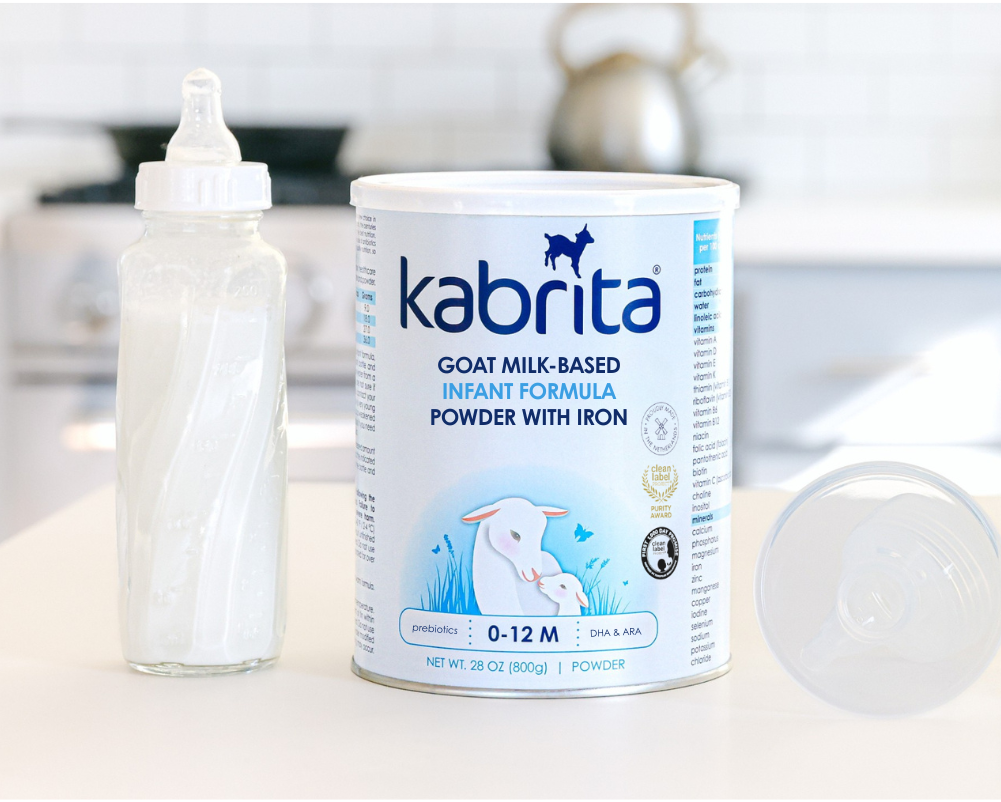
US Goat Milk-Based Infant Formula Powder with Iron
Kabrita Goat Milk-Based Infant Formula Powder with Iron is the first European-made goat milk-based infant formula to meet all FDA requirements. Crafted with high-quality, easy-to-digest goat milk as the base, Kabrita offers a naturally gentle solution for families seeking an effective and well-tolerated source of infant nutrition.
Learn more about the FDA review process and our journey to the USA.
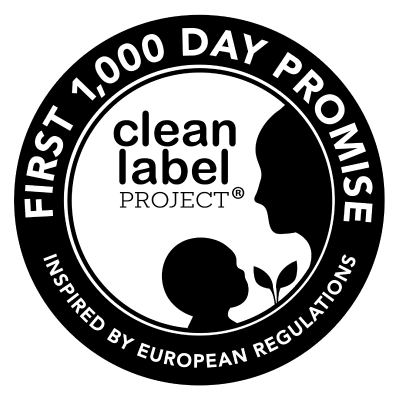


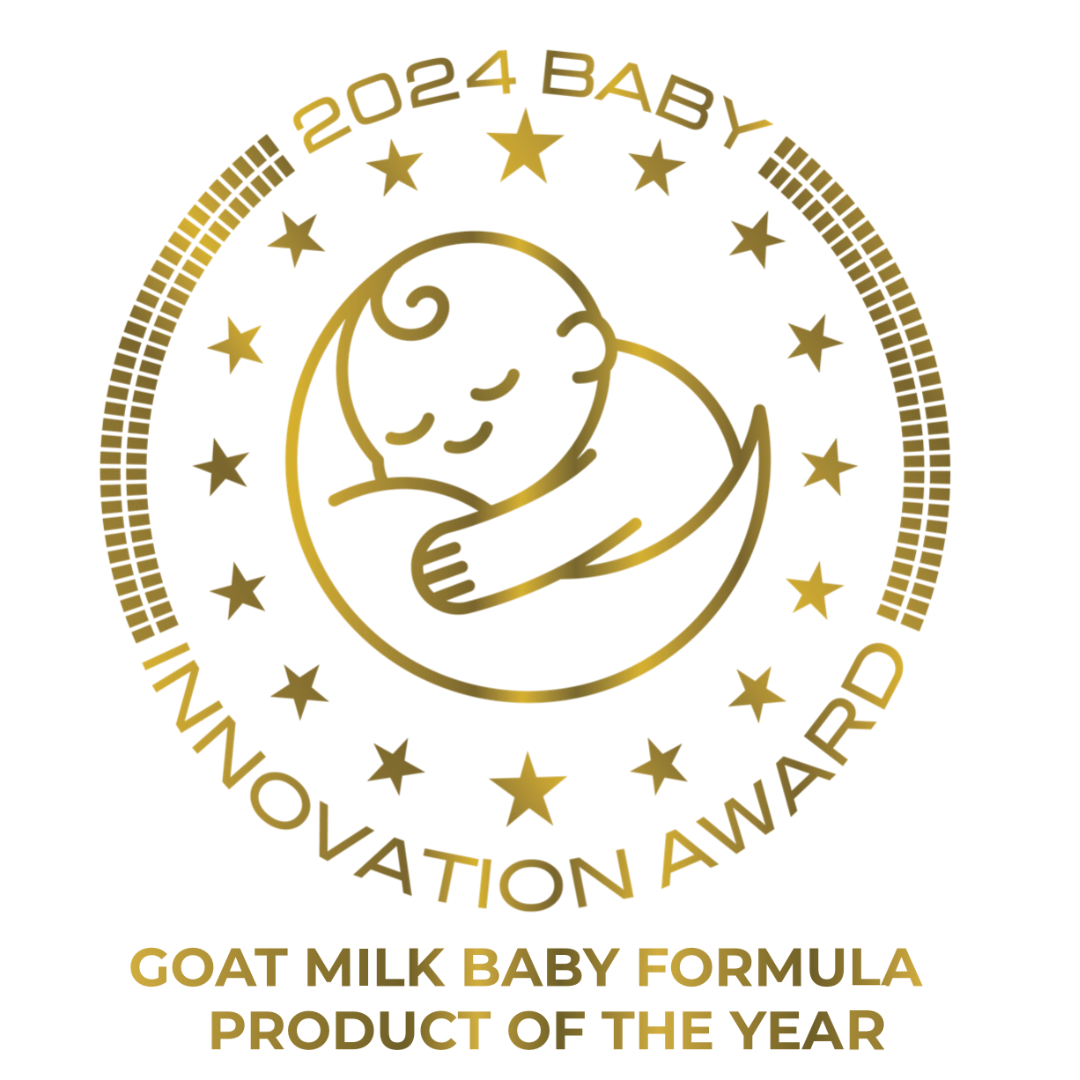
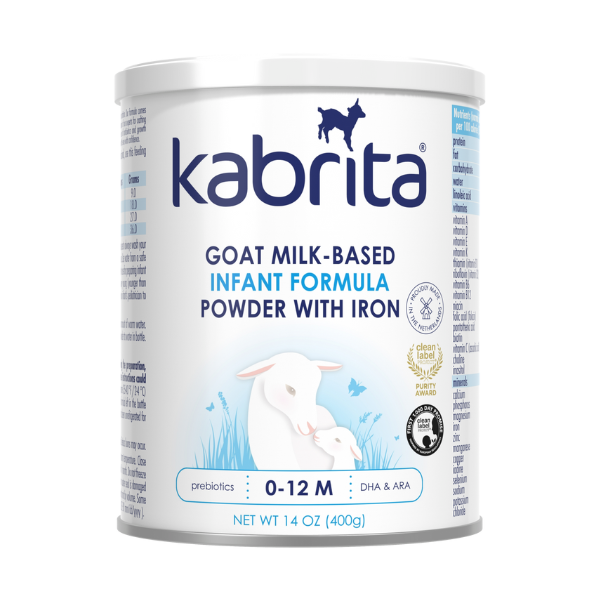
What's inside
Rich in SN-2 palmitic acid
About 20-25% of the fat in breast milk consists of palmitic acid of which 70% is in the form of SN-2 palmitic acid 49 13; supporting better calcium and fat absorption, 50, 51 as well as stool consistency 16,17
Goat milk protein
Goat milk proteins are naturally easier to digest than cow milk proteins.2–7 60:40 whey to casein ratio, to match mature breast milk
Iron
1.2mg of iron per 100 calories of formula, meeting US and EU requirements
Folic acid
17mcg of folic acid per100 calories of formula, meeting US and EU requirements
Vitamin D
73 IU of Vitamin D per 100 calories of formula so that just 28 fl oz of Kabrita Goat Milk-Based infant formula per day meets the daily infant vitamin D recommendations of 400 IU
Choline
25mg of Choline per 100 calories of formula meets US and EU nutrition requirements
DHA
20mg of DHA per 100 calories of formula, meeting EU infant formula requirements
Oligosaccharide Prebiotics
Goat milk naturally has 5x more oligosaccharides than cow milk8,18,19
We know you want to review the label
Disclaimer: This recipe and label are specific to the US formulation.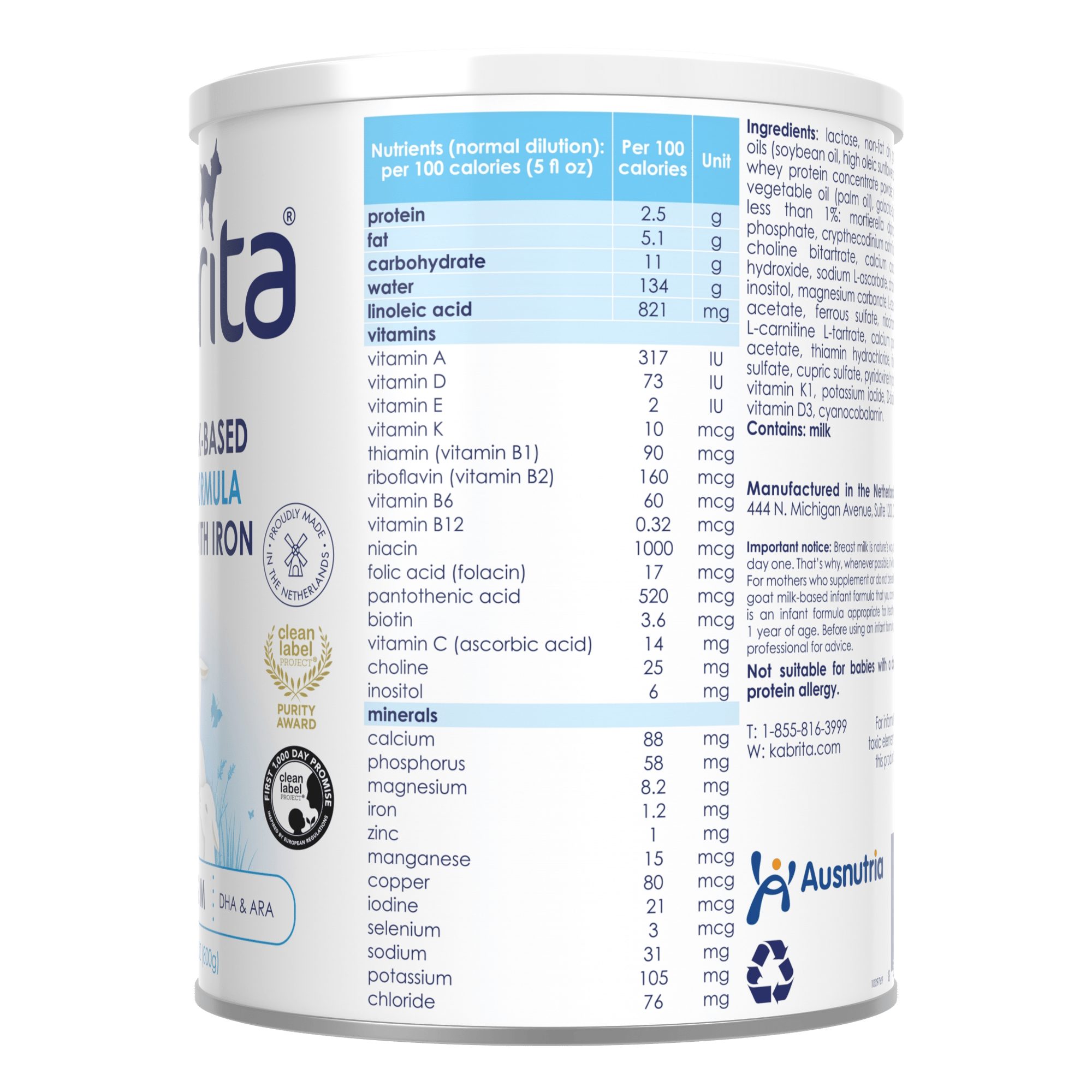
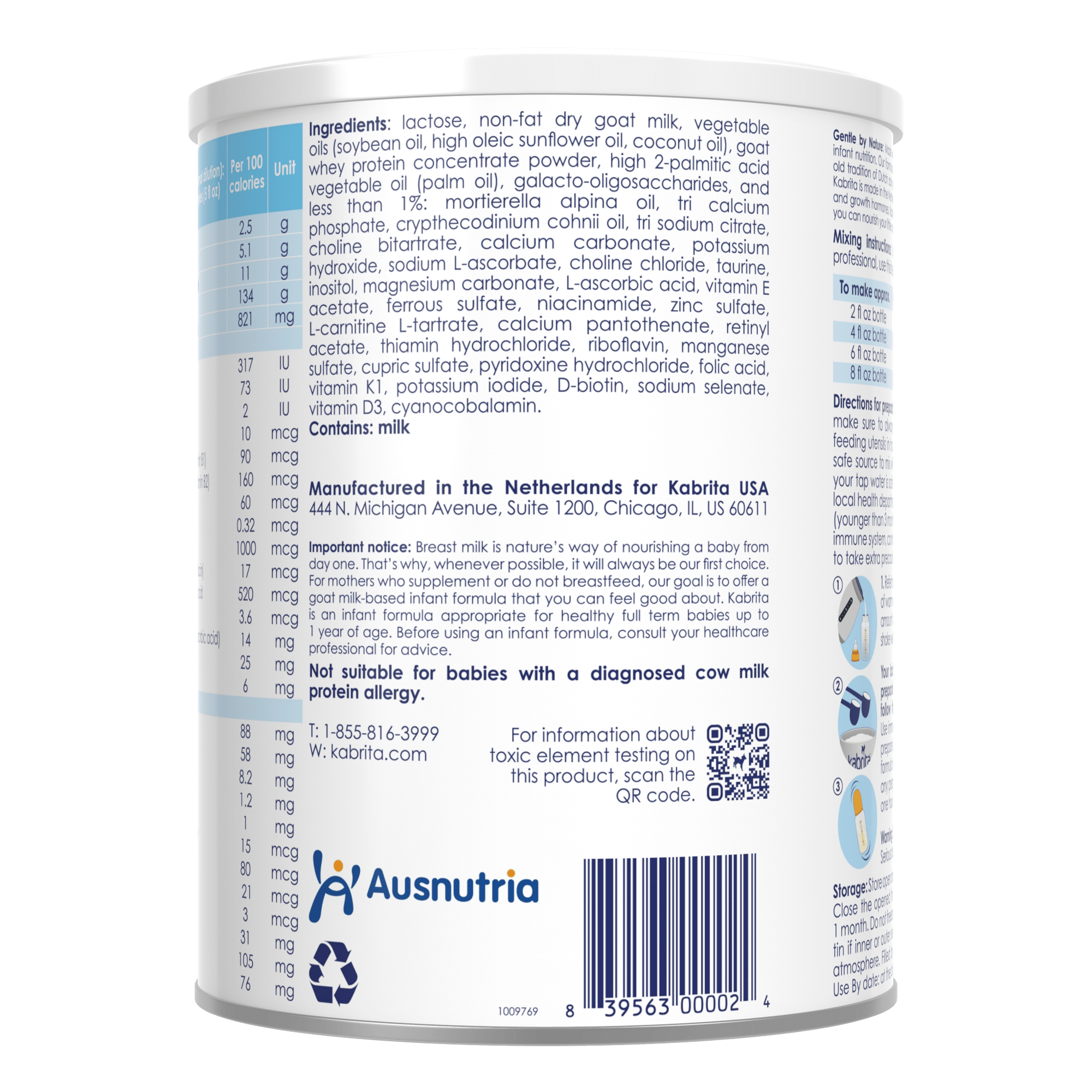
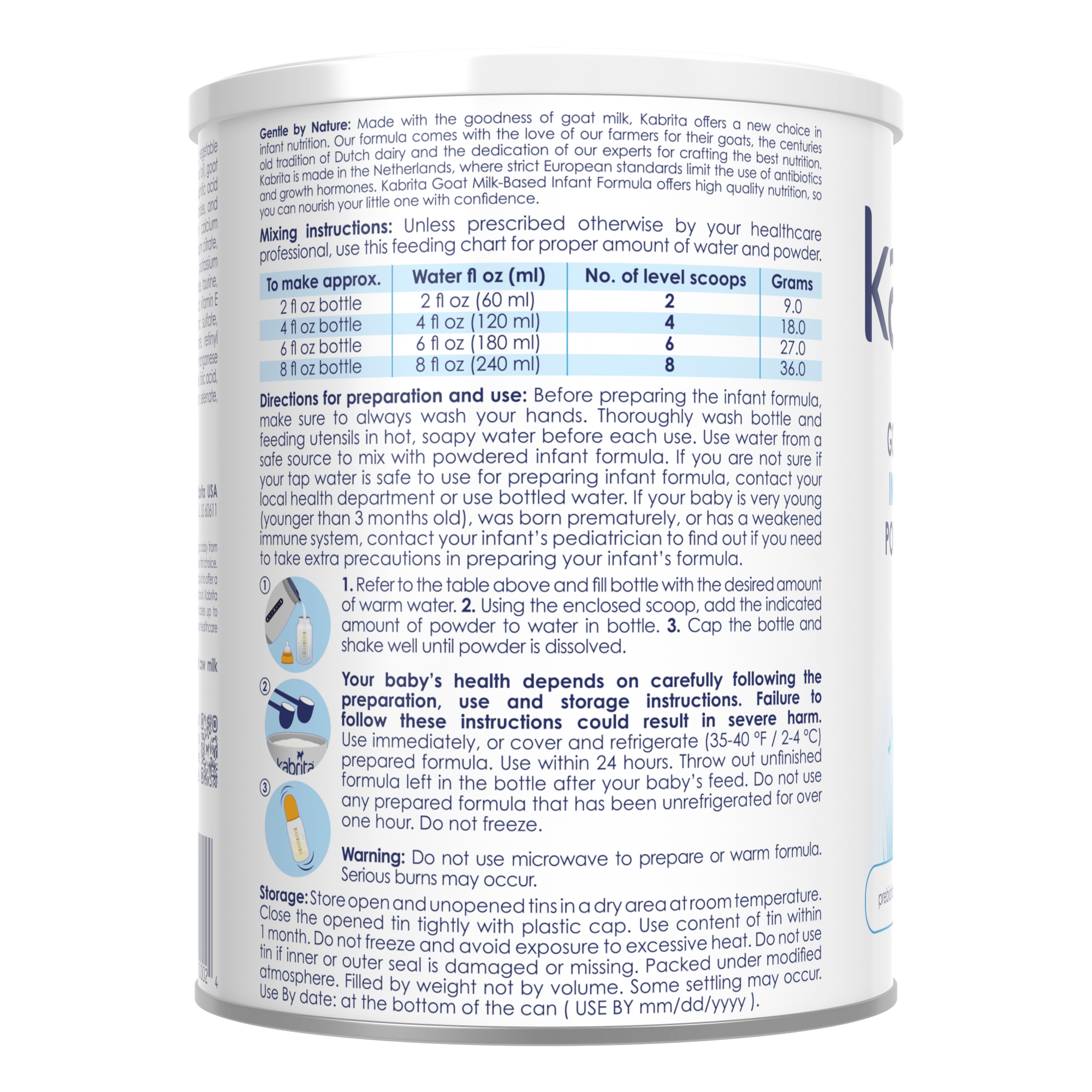
Ingredient deep dive
Click on each ingredient to learn what it is and why we’re proud to have it in our formulaLactose is the main carbohydrate in human milk, and is therefore the preferred and advised carbohydrate in infant formula.20
Lactose is essential for infant growth and development; in fact, infants receive 40% of their caloric requirements from the lactose they consume in the first six months of life.21
Lactose also has prebiotic properties and enhances the absorption of calcium and magnesium,22 and may support gut health by increasing the growth of beneficial bacteria.23 While the goat milk in our products provides some lactose, we add additional lactose to emulate the amount in breast milk.
Skimmed goat milk is the base for all Kabrita products and provides both carbohydrates and protein, both essential for healthy growth and development in infants and children.
The carbohydrates are in the form of lactose, while the two major constituents of milk protein are whey and casein.4
Goats milk has a natural whey to casein ratio of approximately 20:80, so we add whey to mimic the 60:40 ratio found in mature breast milk.24
Kabrita adds SN-2 palmitic acid as 1,3-dioleoyl-2-palmitoyl triglyceride (OPO) in sufficient amounts, which has been shown to improve calcium absorption, fat absorption, and bone strength.14,15
Other benefits including better stool consistency, reduced crying time, and a well-balanced gut microbiota have been reported in scientific research.17,25–29
Galacto-oligosaccharides (GOS) are complex carbohydrates that are also naturally found in human milk.
GOS is the most studied prebiotic and has proven health benefits for infants such as the ability to stimulate growth of beneficial bacteria, hamper the growth of pathogenic bacteria, and improve stool consistency.30
Together with DHA, ARA supports normal eye, brain, and neurological development as well as the repair and growth of muscle tissue.32–35
The balance between DHA and ARA is important, and Kabrita formula meets the scientific recommendation of more ARA than DHA.31,34,36,37
Since 2020, the European infant formula regulations require DHA to be added to infant formula, although it’s not mandatory in the United States.39
Along with ARA, DHA is crucial for brain, eye, and neurological development for infants.32,35
Calcium makes up much of the structure of bones and teeth and allows normal bodily movement by keeping tissue rigid, strong, and flexible.
A small ionized pool of calcium in the circulatory system, extracellular fluid, and various tissues mediates blood vessel contraction and dilation, muscle function, blood clotting, nerve transmission, and hormonal secretion.42
Potassium is required for normal cell function because of its role in maintaining intracellular fluid volume and transmembrane electrochemical gradients.
Potassium has a strong relationship with sodium, the main regulator of extracellular fluid volume, including plasma volume.43
Vitamin C is also an important physiological antioxidant and has been shown to regenerate other antioxidants within the body, including alpha-tocopherol. It plays an important role in immune function and improves the absorption of nonheme iron.44
Vitamin C is required for the biosynthesis of collagen, L-carnitine, and certain neurotransmitters, and it is involved in protein metabolism.
Vitamin C is also an important physiological antioxidant and has been shown to regenerate other antioxidants within the body, including alpha-tocopherol. It plays an important role in immune function and improves the absorption of nonheme iron.44
Zinc also supports healthy growth and development during infancy, childhood, and adolescence and is involved in the sense of taste.51
Vitamin A is a fat-soluble vitamin that is involved in immune function, cellular communication, growth and development, and male and female reproduction.
Vitamin A supports cell growth and differentiation, playing a critical role in the normal formation and maintenance of the heart, lungs, eyes, and other organs.53
Riboflavin also helps maintain normal levels of homocysteine, an amino acid in the blood.55
Manganese is involved in amino acid, cholesterol, glucose, and carbohydrate metabolism; reactive oxygen species scavenging; bone formation; reproduction; and immune response.
Manganese also plays a role in blood clotting and hemostasis in conjunction with vitamin K.56
Copper is a cofactor for several enzymes involved in energy production, iron metabolism, neuropeptide activation, connective tissue synthesis, and neurotransmitter synthesis.
Copper is also involved in many physiologic processes, such as angiogenesis; neurohormone homeostasis; and regulation of gene expression, brain development, pigmentation, and immune system functioning.
Copper also helps the body defend against oxidative damage.57
Iodine is an essential component of the thyroid hormones that regulate many important biochemical reactions, including protein synthesis and enzymatic activity, and are critical determinants of metabolic activity.
They are also required for proper skeletal and central nervous system development in fetuses and infants.61
Vitamin D is a fat-soluble vitamin that promotes calcium absorption in the gut and is critical for normal bone mineralization, bone growth, and bone remodeling.
Vitamin D has other roles in the body, including reduction of inflammation as well as modulation of such processes as cell growth, neuromuscular and immune function, and glucose metabolism.
Many genes encoding proteins that regulate cell proliferation, differentiation, and apoptosis are modulated in part by vitamin D.64
Infant formula product resources

Premium Infant Formula Comparison Chart
Stay informed and ahead of the curve with this comprehensive formula comparison chart. Help your pat...
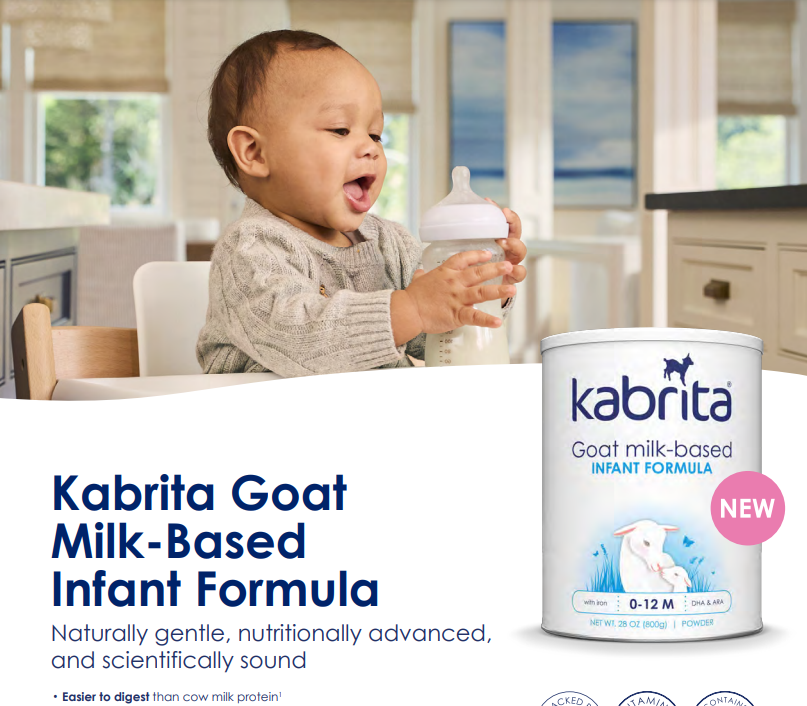
Medical Product Guide
Learn what makes Kabrita an ideal infant formula for babies with our 2-page resource. Discover the e...
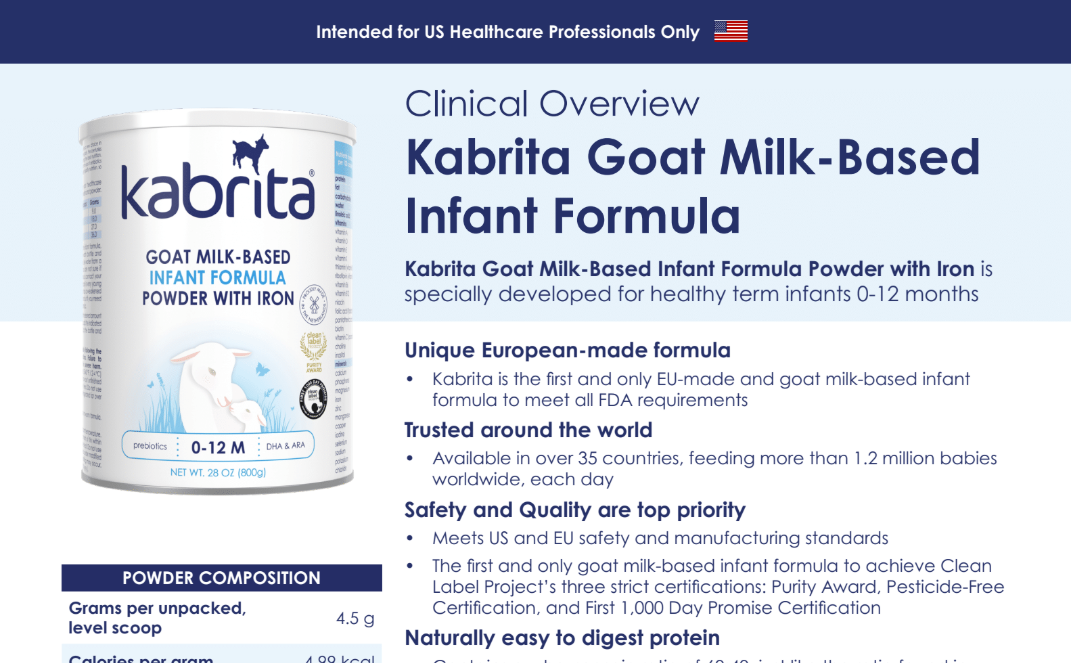
US Infant Clinical Overview
The Kabrita Goat Milk-Based Infant Formula Powder with Iron clinical overview is a tool designed to ...
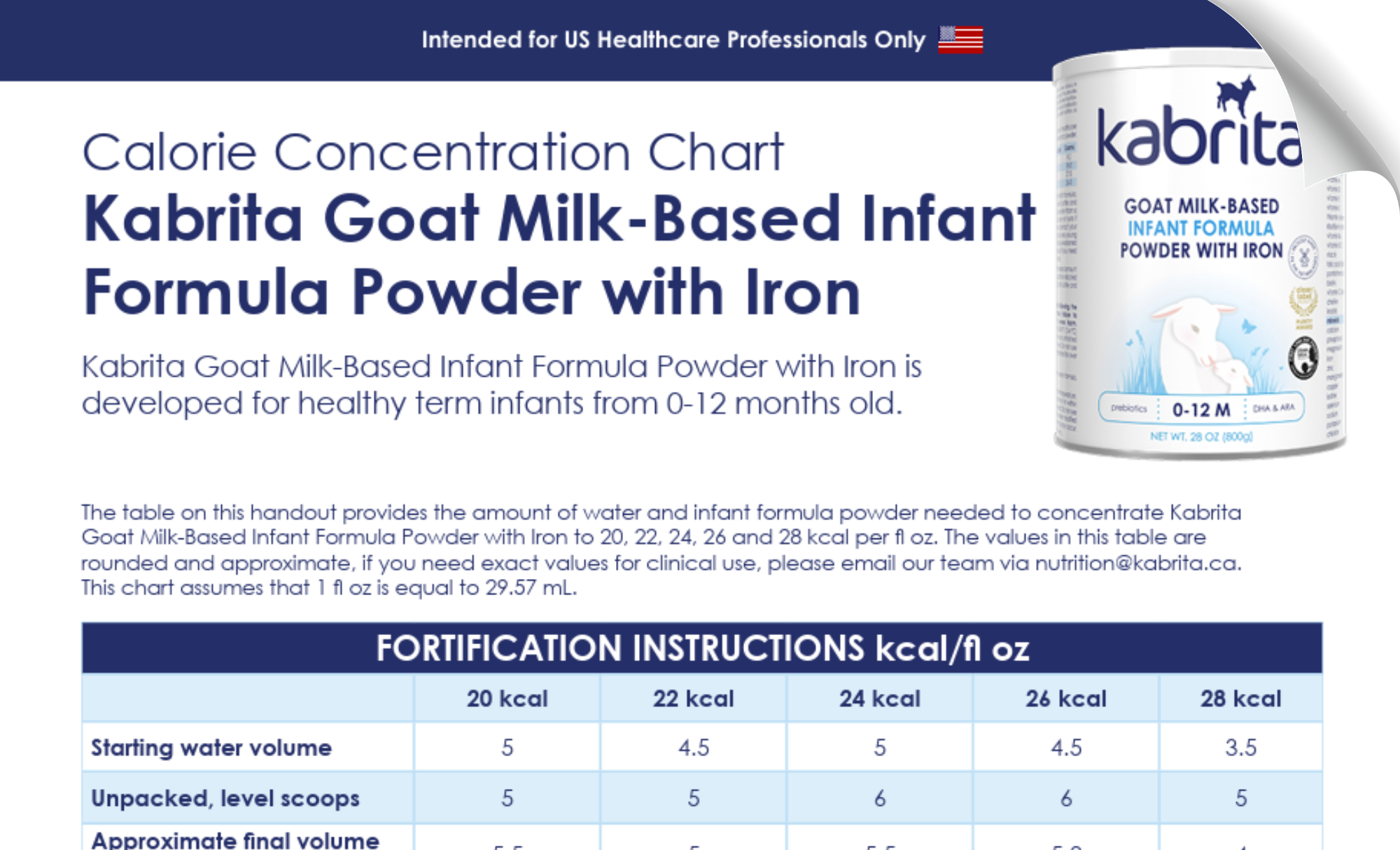
US Calorie Concentration Chart
A comprehensive instruction guide detailing precise amounts of formula powder and water (mL) needed ...







